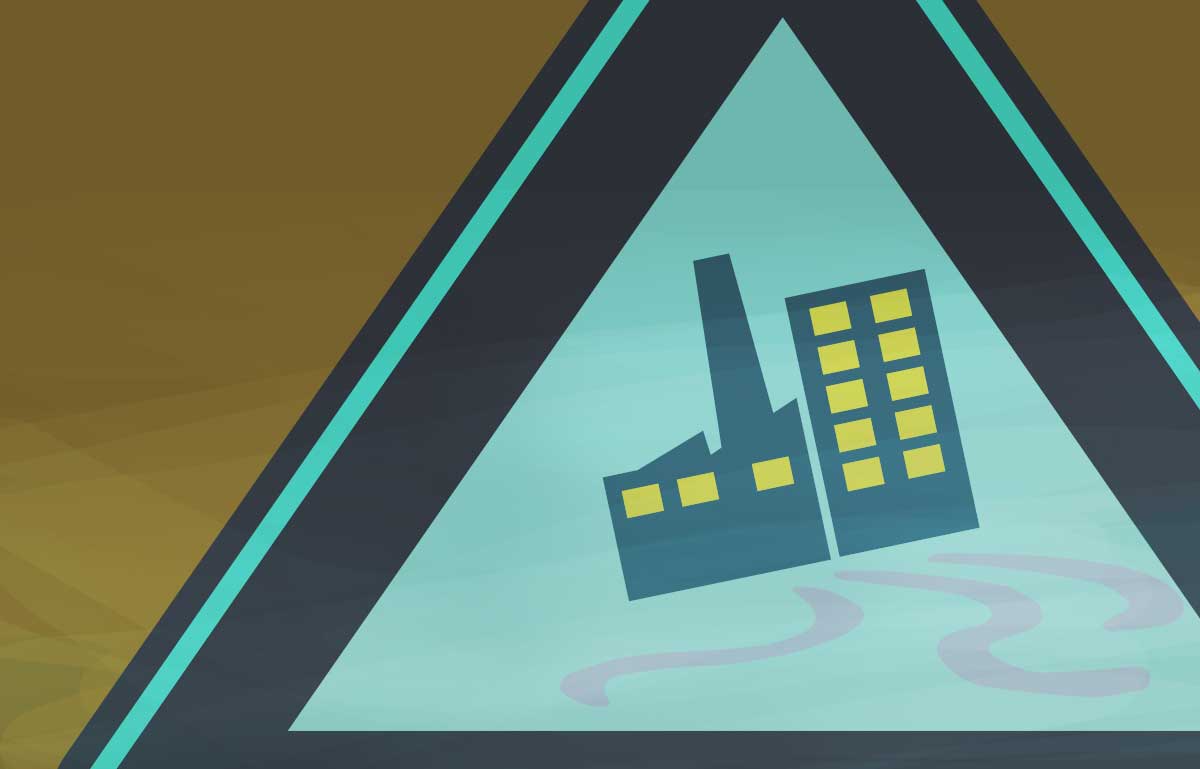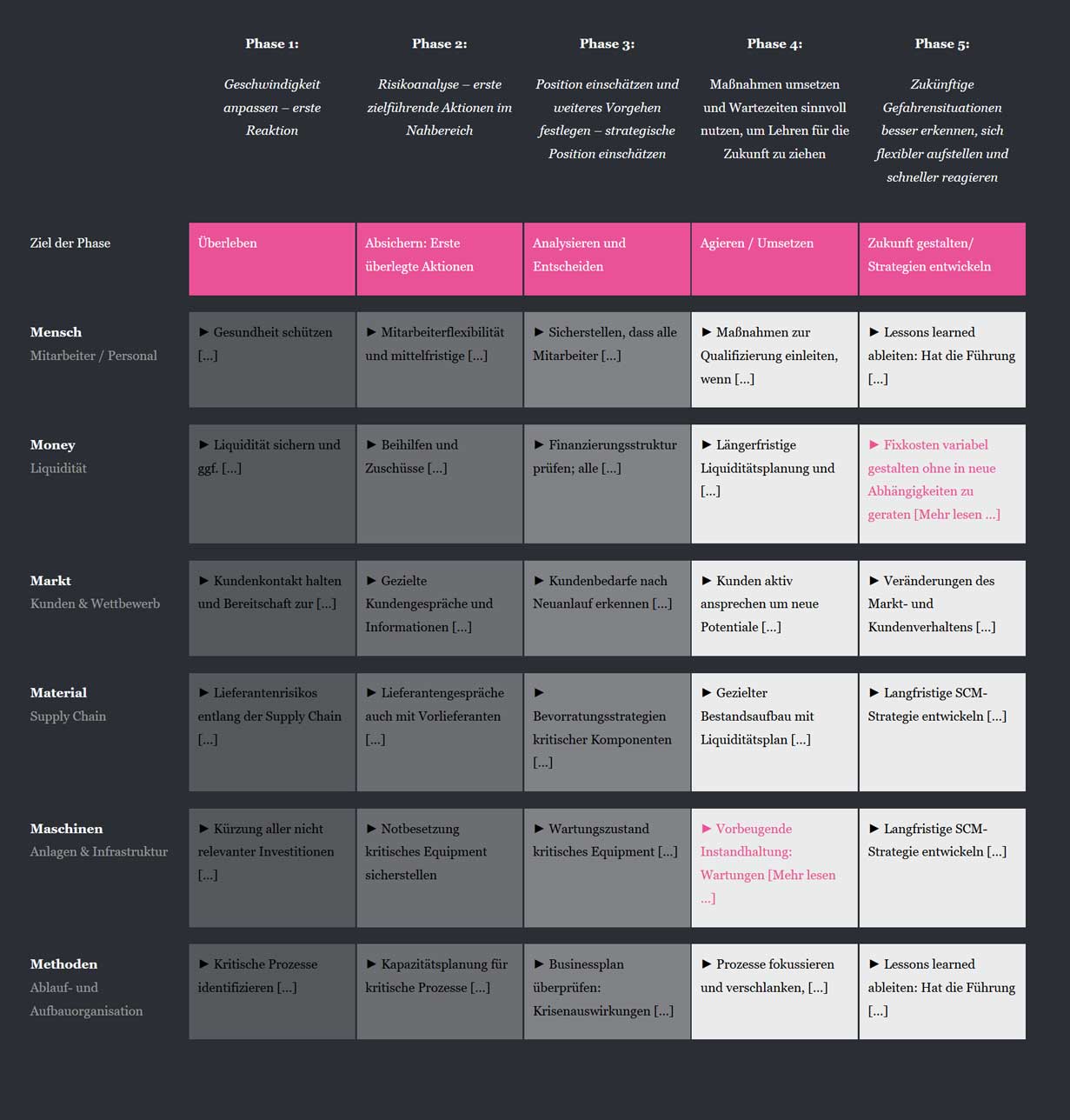
In times of crisis, companies are confronted with a multitude of complex problems. Today’s management has never experienced a pandemic like Covid-19, yet one of its tasks is to master even this unknown challenge. Because one thing is certain: companies must be guided safely through this disruption. But how do we lead a company in times of government-imposed standstill?
Analogies are helpful here. We have chosen a situation that all of us have experienced: An accident on the motorway with a resulting traffic jam. Based on this, we have created a pareto checklist that describes step by step what needs to be done and how you could come out victorious in the end after all.
This is our story:
The team speeds in a car to an appointment as the tail end of a traffic jam behind a curve becomes visible. The driver is forced to initiate full braking …
FULL STOPPhase 1: Avoiding a collision. Parking the car safely so that nothing happens to the team.
Phase 2: Securing the scene of the accident. First aid at the scene of the accident: have the injured been treated or is first aid to be given? Have ambulances etc. been informed? Has the accident site been secured? Is the emergency lane clear?
Phase 3: What options does the team have now? What are the advantages and disadvantages/risks of each option? How long might the full closure last? Will the team have a chance to drive out of the traffic jam in the near future?
Phase 4: Can the team take part in the meeeting out of the car? Can the team leave or at least move the car forward at walking pace? How can the team make good use of the waiting time? What fundamental, strategic or other issues can the team get on with in the meantime?
Phase 5: Was it really necessary to drive or should we have taken the more environmentally friendly train? Would more information / a different or additional navigation system have helped us to avoid the traffic jam? Would it have been helpful if the team had travelled in different means of transport on different routes so that one part would have arrived on time in any case?
The team speeds in a car to an appointment as the tail end of a traffic jam behind a curve becomes visible. The driver is forced to initiate full braking …
FULL STOPPhase 1: Avoiding a collision. Parking the car safely so that nothing happens to the team.
Phase 2: Securing the scene of the accident. First aid at the scene of the accident: have the injured been treated or is first aid to be given? Have ambulances etc. been informed? Has the accident site been secured? Is the emergency lane clear?
Phase 3: What options does the team have now? What are the advantages and disadvantages/risks of each option? How long might the full closure last? Will the team have a chance to drive out of the traffic jam in the near future?
Phase 4: Can the team take part in the meeeting out of the car? Can the team leave or at least move the car forward at walking pace? How can the team make good use of the waiting time? What fundamental, strategic or other issues can the team get on with in the meantime?
Phase 5: Was it really necessary to drive or should we have taken the more environmentally friendly train? Would more information / a different or additional navigation system have helped us to avoid the traffic jam? Would it have been helpful if the team had travelled in different means of transport on different routes so that one part would have arrived on time in any case?

Phase 1:
Adjust speed – first reaction
Phase 2:
Risk analysis – First targeted actions in the immediate vicinity
Phase 3:
Assess position and determine further action. Assess strategic position
Phase 4:
Implement measures. Make good use of the waiting time to learn lessons for the future
Phase 5:
Improve the recognition of hazardous situations.
Flexible positioning. Faster reaction.
Target of the phase
Survive
Safeguarding: First considered actions
Analysing and deciding
Acting / implementing
Shaping the future / developing new strategies
Persons
Staff / personnel
► Protecting health […]
► Identifing staff flexibility and […]
► Ensure that all staff are […]
► Initiate measures for qualifications, if […]
► Derive lessons learned: Did the […]
Money
Liquidity
► Secure and increase liquidity […]
► Apply for subsidies and […]
► Check the financing structure; […]
► Longer-term liquidity […]
Markets
Customers & Competition
► Maintaining customer contact and […]
► Targeted customer meetings and […]
► Identify customer needs after a new […]
► Actively address customers to find […]
► Anticipate changes in market and customer […]
Material
Supply Chain
►Identify supplier risks along […]
► Supplier discussions also with […]
► Stocking strategies for critical […]
► Targeted inventory build-up with […]
► Develop a long-term SCM strategy […]
Machines
Facilities & Infrastructure
► Cutting all non-relevant investments […]
► Ensure emergency staffing of critical equipment
► Maintenance status of critical equipment […]
► Developing a long-term SCM strategy […]
Methods
Process and organisational structure
► Identify critical processes […]
► Capacity planning for critical processes […]
► Review business plan: Identify crisis impacts […]
► Lessons learned can be derived: Did the […]

The table is interactive and is displayed in its entirety only on large monitors.
